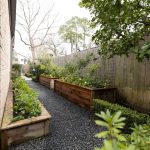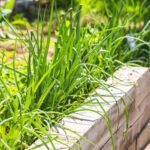If you’re a gardener located in Zone 6B, you’ve probably experienced the unique challenges and rewards of growing vegetables in this particular climate. In this article, we will explore the ins and outs of vegetable gardening in Zone 6B, including essential tools and equipment, selecting the right vegetables, creating a planting schedule, soil preparation and maintenance, dealing with pests and diseases, and harvesting.
By the end of this article, you’ll be equipped with all the knowledge you need to cultivate a thriving vegetable garden in Zone 6B.
Zone 6B is characterized by its specific climate and growing conditions, which can have a significant impact on the success of your vegetable garden. Understanding these factors is crucial for choosing the right vegetables to grow and creating an effective planting schedule. Additionally, proper soil preparation and maintenance are essential for ensuring healthy plant growth in Zone 6B.
In the following sections, we will delve into the details of vegetable gardening in Zone 6B, providing valuable insights and tips to help you maximize your garden’s potential. Whether you’re a novice or experienced gardener, there’s always something new to learn about optimizing your vegetable garden for this specific climate. Let’s get started.
Understanding the Climate and Growing Conditions in Zone 6B
Temperature and Frost Dates
In Zone 6B, the average annual minimum temperature ranges from – 5°F to 0°F. It is important for gardeners to take note of the last frost date in spring, which typically falls around mid-April, and the first frost date in fall, which occurs around mid-October. These dates are crucial for planning out your planting schedule and protecting your crops from potential frost damage.
Rainfall and Moisture Levels
Zone 6B experiences an average annual precipitation of 30-40 inches. However, it is important to note that the distribution of rainfall throughout the year can vary. During the summer months, there may be periods of drought, requiring gardeners to pay close attention to watering their vegetable plants adequately. Additionally, ensuring proper drainage in your garden beds is essential to prevent waterlogging during heavy rainstorms.
Sunlight Exposure
Vegetable crops thrive best when they receive ample sunlight exposure. In Zone 6B, gardens should ideally receive at least 6-8 hours of direct sunlight daily. It is important for gardeners to consider the positioning of their garden beds and the potential obstructions that may block sunlight as the seasons change.
Understanding the climate and growing conditions in Zone 6B is vital for successful vegetable gardening. By being aware of temperature patterns, rainfall levels, and sunlight exposure, gardeners can make informed decisions when choosing vegetables to grow and implementing effective maintenance practices throughout the growing season.
Essential Tools and Equipment for Zone 6B Vegetable Gardening
When it comes to vegetable gardening in Zone 6B, having the right tools and equipment can make all the difference in the success of your garden. One essential tool for any gardener is a sturdy shovel. This will be used for tasks such as digging, planting, and moving soil.
A durable garden hoe is also important for breaking up compacted soil and removing weeds. Other necessary hand tools include a hand trowel, pruners, and a watering can or hose for irrigation.
In addition to hand tools, there are certain pieces of equipment that can greatly benefit Zone 6B vegetable gardeners. For example, a high-quality wheelbarrow can make transporting heavy loads of soil, compost, or harvested vegetables much easier. A sturdy trellis or tomato cages may be needed to support vining plants such as tomatoes, cucumbers, or peas as they grow. Additionally, a good pair of gardening gloves will protect your hands while working in the garden.
It’s also important to consider the storage and maintenance of your tools and equipment. Proper storage can prolong the life of your gardening tools and keep them in good working condition.
Keeping your tools clean and dry after use, sharpening blades regularly, and oiling hinges and moving parts will help prevent rust and corrosion. By investing in the right tools and equipment for your Zone 6B vegetable garden, you’ll be setting yourself up for success throughout the growing season.
| Tools | Equipment |
|---|---|
| Shovel | Wheelbarrow |
| Garden hoe | Trellis/tomato cages |
| Hand trowel/pruners/watering can or hose | Gardening gloves |
Selecting the Right Vegetables for Zone 6B
When it comes to vegetable gardening in Zone 6B, it’s important to choose vegetables that can thrive in the specific climate and growing conditions of this region. Some vegetables are more suited to the cooler temperatures and shorter growing season of Zone 6B, making them ideal choices for your garden. Here are some key considerations when selecting the right vegetables for your Zone 6B garden.
Cold-Weather Crops
In Zone 6B, where frost dates can extend well into spring and fall, cold-weather crops are a great choice for your vegetable garden. Consider planting leafy greens like lettuce, spinach, and kale, as well as root vegetables such as carrots, radishes, and beets. These vegetables can tolerate cooler temperatures and even benefit from a touch of frost, making them perfect for Zone 6B’s climate.
Warm-Weather Crops
While Zone 6B experiences colder temperatures, there is still plenty of time during the summer months for warm-weather crops to flourish. Tomatoes, peppers, cucumbers, and zucchini are all excellent choices for a Zone 6B vegetable garden. Be sure to start these crops indoors or in a greenhouse to give them a head start before transplanting them outside once the risk of frost has passed.
Varieties With Short Growing Seasons
In Zone 6B, it’s important to select vegetable varieties with relatively short growing seasons to ensure a successful harvest before the first frost hits in fall. Look for early-maturing varieties of your favorite vegetables so that you have enough time to plant and harvest them within the limits of your growing season. By strategically choosing vegetables with shorter growing periods, you can maximize your yield and enjoy a bountiful harvest in your Zone 6B vegetable garden.
Creating a Planting Schedule for Zone 6B Vegetable Garden
When it comes to creating a planting schedule for your Zone 6B vegetable garden, timing is everything. With the cold, temperate climate of Zone 6B, it’s essential to plan your planting carefully to ensure a successful harvest.
One of the most important factors in creating a planting schedule is understanding the average last frost date in your area. For Zone 6B, the average last frost date is typically around mid-April to early May, so it’s crucial to factor this into your schedule when planning your planting.
In addition to the last frost date, it’s also important to consider the specific requirements of each vegetable you plan to grow. Some vegetables thrive in cooler temperatures and can be planted as soon as the soil can be worked in early spring, while others need warmer conditions and should be planted later in the season. Researching the specific growing needs of each vegetable will help you determine the best time to plant them in your Zone 6B garden.
To make things easier, create a planting calendar that outlines when each vegetable should be planted based on your local climate and growing conditions. This will allow you to stay organized and ensure that you don’t miss any important planting deadlines. Keep in mind that a well-planned planting schedule not only ensures a bountiful harvest but also helps with crop rotation and succession planting for continuous yields throughout the growing season.
| Vegetable | Planting Time |
|---|---|
| Peas | Early April |
| Lettuce | Mid-April |
| Tomatoes | Late May |
| Zucchini | Early June |
By following a customized planting schedule tailored to Zone 6B, you’ll be well on your way to reaping a successful harvest from your vegetable garden. It’s worth putting in the effort upfront to create an organized plan for when and where you’ll plant each crop – it will pay off with healthier plants, greater yield, and less stress throughout the growing season.
Tips for Soil Preparation and Maintenance in Zone 6B
When it comes to successful vegetable gardening in Zone 6B, proper soil preparation and maintenance are crucial. The right soil structure and nutrient content can make all the difference in the yield and health of your vegetables. Here are some essential tips for soil preparation and maintenance in Zone 6B:
- Conduct a soil test: Before planting your vegetables, it’s important to conduct a soil test to determine the pH level and nutrient content of your soil. This will help you understand what amendments or fertilizers may be necessary to ensure optimal growing conditions for your plants.
- Add organic matter: Incorporating organic matter such as compost, aged manure, or leaf mold into your soil can improve its structure, drainage, and nutrient-holding capacity. Organic matter also provides essential nutrients for plant growth.
- Mulch regularly: Applying a layer of organic mulch over the soil surface helps retain moisture, suppress weeds, and regulate soil temperature. It also contributes to the gradual breakdown of organic matter, enriching the soil with beneficial nutrients.
In addition to these tips, proper maintenance of the soil throughout the growing season is important for sustaining healthy plant growth. Regular watering, monitoring for signs of nutrient deficiencies or imbalances, and addressing any issues promptly will contribute to the overall success of your Zone 6B vegetable garden.
By implementing these tips for soil preparation and maintenance in Zone 6B, you can create an environment that promotes healthy root development and robust plant growth. Taking care of your garden’s soil will not only benefit this year’s harvest but will also contribute to the long-term health and productivity of your vegetable garden.
Dealing With Pests and Diseases in Zone 6B Vegetable Garden
One of the biggest challenges for gardeners in Zone 6B is dealing with pests and diseases that can damage or even destroy their vegetable crops. It’s important to be proactive in preventing and managing these issues to ensure a successful harvest. Common pests in Zone 6B include aphids, cabbage worms, and slugs, while diseases such as powdery mildew and blight can also pose a threat to your plants.
To prevent infestations and disease outbreaks, it’s essential to practice good garden hygiene. This includes regular removal of weeds, debris, and diseased plants, as well as proper spacing of vegetables to promote airflow and reduce the risk of fungal infections. Additionally, using floating row covers can help protect plants from pests while allowing sunlight, air, and water to reach them.
When it comes to pest control, employing natural predators like ladybugs and lacewings can be an effective way to keep aphid populations in check. For larger pests such as deer or rabbits, installing fencing around the garden area may be necessary. As for disease management, applying organic fungicides or compost tea can help prevent or control common fungal infections.
Overall, staying vigilant and addressing pest and disease issues promptly is key to maintaining a healthy vegetable garden in Zone 6B. By implementing preventive measures and utilizing sustainable control methods when necessary, you can minimize the impact of pests and diseases on your crops and maximize your harvest.
Harvesting and Extending the Growing Season in Zone 6B
When it comes to harvesting your vegetables in Zone 6B, timing is everything. Different vegetables have different optimal harvest times, so it’s important to keep track of when each crop should be picked. Here are some general guidelines for harvesting popular vegetables in Zone 6B:
- Tomatoes: Harvest when they are fully colored, but still firm. They should give slightly when gently squeezed.
- Peppers: Pick them when they reach full size and have turned their mature color (red, yellow, orange, etc).
- Carrots: These root crops can be harvested as soon as they reach a usable size, typically around 1/2 inch in diameter.
Extending the growing season in Zone 6B can be challenging due to the cooler temperatures. However, with some techniques and tools, you can enjoy fresh produce well into the fall or even winter. Consider using these methods to extend your growing season:
- Cold frames: These mini-greenhouses can help protect your plants from frost and cold winds.
- Row covers: Lightweight fabrics that can be draped over plants to provide a few degrees of frost protection.
- Mulching: Applying a layer of mulch around your plants can help retain soil warmth and provide insulation against the cold.
As an added tip for extending the growing season, consider planting cold-tolerant varieties of vegetables. These are bred to withstand cooler temperatures and can thrive well into the fall months. With careful planning and a bit of extra effort, you can enjoy fresh produce from your Zone 6B vegetable garden for an extended period.
Conclusion
In conclusion, gardening in Zone 6B can be a rewarding and fulfilling experience for enthusiasts who are willing to put in the time and effort. With the right understanding of the climate and growing conditions, essential tools and equipment, selection of suitable vegetables, and a well-planned planting schedule, gardeners can ensure a bountiful harvest.
By following tips for soil preparation and maintenance, as well as effectively dealing with pests and diseases, individuals can maintain a healthy vegetable garden throughout the growing season.
One of the key takeaways from this Zone 6B vegetable gardening calendar is the importance of proper planning and research. By understanding the unique needs of the climate and selecting vegetables that thrive in this zone, gardeners can set themselves up for success. Additionally, by paying attention to soil preparation and maintenance, as well as pest and disease management, individuals can protect their plants and ensure a fruitful harvest.
As gardeners prepare to enjoy the fruits of their labor in Zone 6B vegetable gardens, it’s important to remember that harvesting is not the end of the journey. There are ways to extend the growing season by implementing strategies such as using row covers or cold frames.
By doing so, individuals can continue to enjoy fresh produce even as temperatures begin to drop. The satisfaction that comes from enjoying homegrown vegetables is truly unmatched, making all the hard work throughout the growing season worthwhile.
Frequently Asked Questions
What Vegetables Grow Well in Zone 6b?
In Zone 6b, vegetables like tomatoes, peppers, lettuce, broccoli, carrots, and radishes tend to grow well. These vegetables thrive in the relatively mild climate and moderate growing season of Zone 6b.
When Should I Start Seeds in Zone 6b?
It is best to start seeds in Zone 6b after the last frost date, which typically falls between late April and mid-May. Starting seeds indoors about 6-8 weeks before the last frost date can give them a head start for planting outdoors.
What Is the Difference Between Zone 6a and 6b?
The main difference between Zone 6a and 6b lies in their average minimum winter temperatures. While both zones experience cold winters, Zone 6b generally has slightly milder winter temperatures compared to Zone 6a. This difference can affect the types of plants that can survive and thrive in each zone.

If you’re looking to get into vegetable gardening, or are just looking for some tips on how to make your current garden better, then you’ve come to the right place! My name is Ethel and I have been gardening for years. In this blog, I’m going to share with you some of my best tips on how to create a successful vegetable garden.





